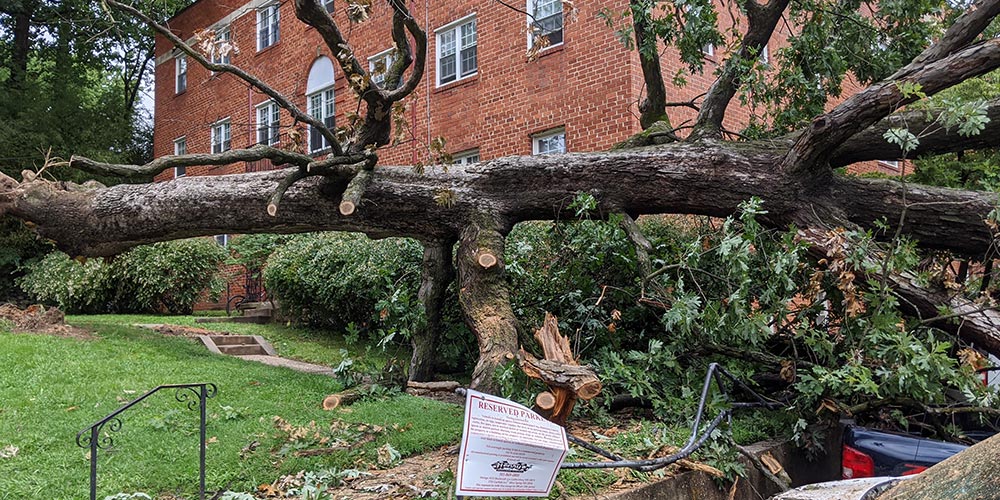
Ways to Repair Your Lawn After Tree Removal
Even though it’s sometimes essential, removing a tree from your lawn frequently results in soft patches or obvious harm to your grass. This can be explained by the tree removal services actions or by the tree and its root system not existing.
When this happens, there may be uneven patches of lawn that need to be tended to when the soil begins to fill in the spaces left behind.
Thankfully, there are actions you can take to fix your grass, no matter how bad it looks. After trimming a tree, your yard will look better thanks to these tips:
Remove the roots and stump
In most cases, the stump and roots remain after removing a tree. Both the stumps and roots may pose several hazards to the property, and any remaining materials may draw in termites and other pests.
Choose a professional tree care business or arborist. They will use various tools to remove your grass’s trunk and roots.
A tree’s root system can expand outward and penetrate deeply into the ground. For this reason, you must cut off most of your base roots to avoid future issues like trees pushing aside any remaining roots.
When it comes to stump removal, one of the most effective ways to remove it is using stump grinding. Since stump grinding removes the stump below ground, it makes it possible to cover the space with sod or dirt.
Excavation may be necessary to remove larger roots, but this guarantees that new plantings or grass restoration won’t be hampered.
Install SOD
Mature grass in rolled bundles is known as a SOD, and it comes with the soil in which it grows. They are carefully farmed, chopped, and hauled up before being bundled and transported to construction sites.
You can use the SOD to quickly reinstall your grass and give it a fully grown-out appearance. The SOD rolls’ remaining seams will swiftly and consistently grow together. After removing a tree, you can use this technique if:
- You want the area to appear its best, and you want a speedy solution to your lawn
- You wish to reshape your yard.
- There are problems with erosion in the area, and sod can help.
- The beauty of this solution is that you can use it in any season of the year.
Deep root fertilization
Removing a tree might cause problems for other trees on your lawn in addition to the area where the tree once stood.
After taking down another tree, other trees may not receive the proper nutrients to grow, which could hurt their health.
As the ground is disturbed and the root systems are obstructed, you may notice more dead trees on your lawn.
To avoid this, you should undertake deep-root fertilization. Using this strategy will require you to apply specific nutrients to the trees deep in the earth.
In this manner, the other trees will have access to the nutrients and be able to adapt to the changes in the landscape’s soil.
If a disease affects the removed tree, the deep root fertilization technique may stop the sickness from spreading to the other trees.
Repairing the lawn indent
When you take a tree out of a lawn, its roots and stump are pulled out, which causes issues for the lawn since the earth and grass push up into mounds. Big mounds can cause puddles or pools of water and hinder the growth of other plants.
After a tree is removed, large indents, grooves, and bumps may be visible. It’s possible that grass was dragged or torn in various places.
There’s also a chance that the vehicles you used to remove the tree parts left dents or tracks in the grass.
Grass seeds can help fresh grass grow, and you can use dirtbags to level the lawn. The entire lawn may not return to its former state for some time, perhaps even a season, but the extra work and effort will be well worth it.
Reseed the area
The most popular way of repairing a damaged lawn after stump removal is to plant a new tree in the area left by the removed stump rather than using sod rolls.
You should ensure that you clear the area where the stump was removed from any wood shavings, soil chunks, etc.
You also should ensure that the hole is the same height as the yard and filled with soil. Choose topsoil high in nutrients and quality to make it easier to produce new grass. You should compact and level the soil using a rake.
After that, you can grow grass there or plant a new tree. If the space is tiny, spreading grass seeds by hand on the ground is simple. Reseed the lawn and wait for the grass to grow.
Make sure the grass you select will look good on your lawn.
You should evenly distribute the seeds over the dirt, then cover the whole surface. To ensure that a sufficient number of seeds are utilized per square inch, distribute the seeds and crisscross the planting direction.
After that, carefully rake the seeds into the ground and cover them with another layer of topsoil. This will lessen the chance that rain or a strong wind will wash the seeds away.
Brace and cable adjacent trees
Other trees may be impacted by the fallen tree’s trunk and branches. Trees may become lean, or their branches may become weaker and more vulnerable to harm.
You should consider bracing and cabling as an alternative to clearing every tree. Bracing can assist in stabilizing any angled growth from a fallen or destroyed tree and protect the trunk of the tree.
In addition, cabling helps keep tree branches in place and stop them from collapsing and twisting a tree in different directions. According to arborist services Kensington, a tree will become more stable when you apply these strategies over time.
